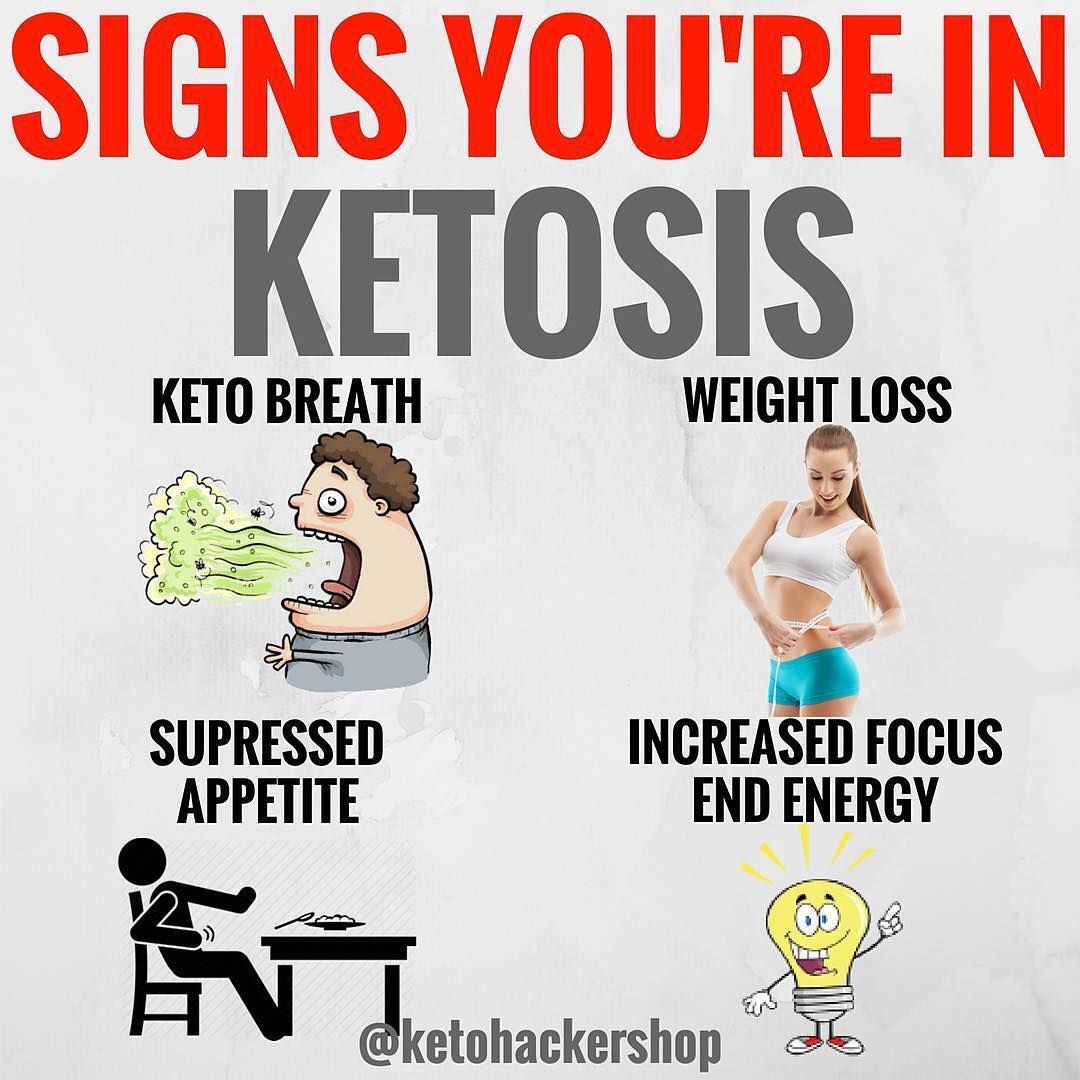Table of Contents
Being overweight can have a significant impact on many aspects of your life.
It doesn’t just affect how you look, it affects how you feel, and even how you think.
Carrying too much body fat increases your likelihood of suffering from a wide range of otherwise avoidable diseases.
It could also take years off your life.
Lugging all that extra weight around will also drain your energy.
How to Start a Keto Diet for Beginners?
None of this information is exactly news.
Most people know that reaching and then maintaining a healthy weight is a good idea.
Because of this, a considerable percentage of the population is currently, was recently, or intends to go on a diet.
Unfortunately, short term fixes do not work.
If you start a diet with the intention of following it for just a few days or weeks, you have already lost the battle of the belly bulge. It took you years to gain your excess weight, and it’s going to take a long-term commitment to lose it.
That means you need to pick a diet you can stick to.
With so many diets to choose from, it can be hard to know which one is right for you. Diets
that look good on paper are often unsustainable, and just because a diet is endorsed by a
celebrity does not mean it will work.
One of the more popular diets is the ketogenic diet or keto for short. Is keto right for you?
Let’s investigate!
What is the ketogenic diet?
The ketogenic diet has been around for close to a century. It was initially devised by doctors
to treat epilepsy and hyperactivity in children.
Beyond its original medical applications, the keto diet was found to be an effective weight loss eating plan and was popularized by the late Dr. Atkins.
In simple terms, keto is a very low-carb, moderate protein, high-fat diet. Your body prefers
to use glucose for fuel, and glucose is derived from dietary carbohydrates.
When you go keto, carbs are limited to 20-50 grams per day. This means your body has to use more fat
for fuel.
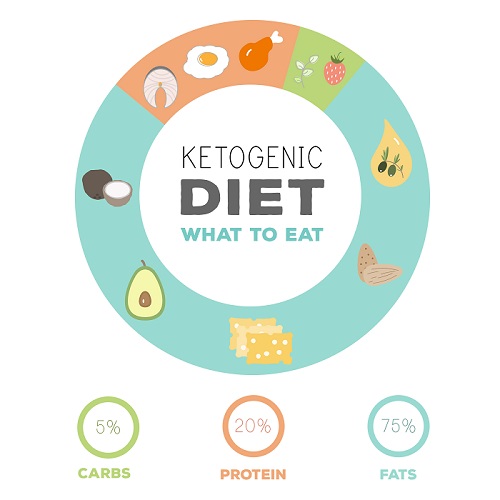
keto diet chart for beginners
Unfortunately, your brain and muscles can’t get by on fat alone. To replace the missing
carbs, your body turns fat into something called ketones.
It takes a lot of fat to make relatively few ketones and that energy inefficiency means that you burn fat and lose weight faster. Once your body makes the shift to using ketones for energy, you are said to be in ketosis. When this happens, your body gets very good at using fat for energy.
Eliminating carbs from your diet also helps lower your blood glucose and insulin levels. Both
of these things further enhance fat burning.
Cutting out foods like bread, rice, pasta, potatoes, breakfast cereals, and carb-based junk food and replacing them with vegetables will lower your calorie intake too.
Different keto diets
Keto means different things to different people. That’s because there are several different interpretations of this popular diet. All keto diets work in the same way, by limiting your carb intake, but each one is different enough that it's worth considering them all to see if diet is right for you.
The Atkins Diet:
Arguably the most popular keto diet, with Atkins, you follow a very strict keto diet for two weeks and then gradually increase your carb intake after that. The idea is to try and find the carb level at which you can continue to lose weight.
Atkins is broken down into phases, and you move from one stage to the next according to your weight loss progress.
The standard keto diet:
With this keto variation, you simply reduce your carb intake to less than 50 grams per day, usually aiming for 20-30 grams. You maintain this level of carbs for as long as you wish to stay in ketosis.
The targeted ketogenic diet (TKD):
With TKD, you are allowed to consume a small amount of carbohydrate just before or shortly after exercise. This should not interfere with fat or weight loss but will give you the energy you need to work out.
Carbs are limited to about 50 grams per serving. This is in addition to the normal 20-50 grams of carbs allowed on keto.
The high-protein ketogenic diet:
This keto diet variant was invented by bodybuilder and nutrition expert Dave Palumbo. With it, you increase your protein intake to 1 to 1.5 grams per kilo of bodyweight.
This provides more amino acids for muscle repair and growth while maximizing fat loss.
The Lazy keto diet:
With this version of keto, you focus on one thing only – your carb intake. All you have to do is make sure that your carb intake is less than 50 grams per day, while getting the rest of your calories from a mixture of high fat and moderate protein foods.
You can even eat junk food on lazy keto, so long as it’s very low in carbs. A lot of people call this version dirty keto.
The cyclic ketogenic diet CKD):
CKD involves eating less than 50 grams of carbs 5-6 days per week, and then eating as much as 400-600 grams of carbs for 1-2 days per week.
This version is aimed at bodybuilders and hardcore exercises who need extra energy for training but still want to lose fat. It's an advanced diet and not really suitable for non-exercisers.
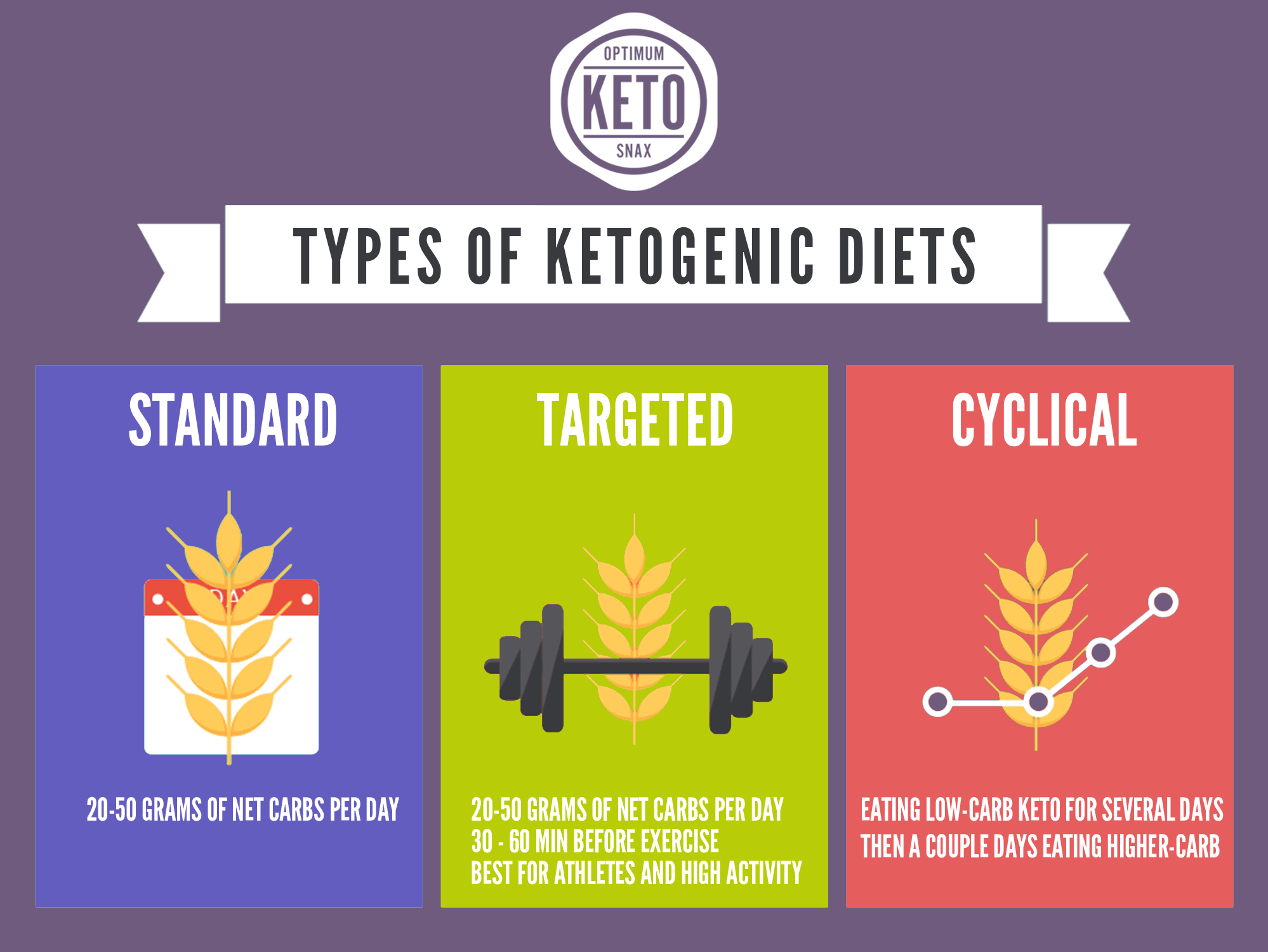
Src: optimumketo Types of Ketogenic Diets
Benefits of the keto diet
As well as being an effective way to lose weight and burn fat, being in ketosis may have some additional health benefits. These include:
Keto can also help keep your mind sharp. When you eat carbs, your blood glucose levels tend to rise sharply and then fall just as fast. This can have a significant impact on your brain 
Once you enter ketosis, your brain will be running on ketones and not carbs, and the supply will be stable. Because of this, advocates of the keto diet believe that going low-carb can make you more productive.
While the benefits are impressive, it’s also worth noting that many of these claims are the result of short-term human or even animal studies and are not conclusive. However, it does suggest that keto is more than just a weight loss diet.
How to do keto Diet?
If your interest in keto has been piqued, you are probably wondering how to start. Despite being a strict diet, keto is actually quite simple. Here is a step-by-step guide to getting started on a basic keto diet keto.
1. Know what foods you can and can’t eat
The keto diet is a high fat, moderate protein, and very low carb diet. You must keep your carb intake to less than 50 grams per day, and preferably closer to 20-30 grams.
If you go over this number, you will not get the full effect of the keto diet, and you might not even lose weight.
Foods like bread, rice, pasta, breakfast cereals, processed foods, and potatoes are very high in carbs and must be avoided or replaced with much lower carb alternatives. In contrast, you can eat lots of meat, fish, eggs, above-ground, and leafy green vegetables.
Make sure you know what you can and can't eat before you start keto. In a lot of cases, you'll just need to modify your regular meals, replacing starchy carbs like bread and rice with non-starchy vegetables such as cabbage, lettuce, zucchini, and broccoli.
There is a comprehensive list of foods that are and aren’t keto-friendly in the next section of this guide.
2. Get used to the idea of eating fat
The keto diet is not just low in carbs, it's high in fat too. You need to eat fat to burn fat – and that can be a hard concept to get your head around. Because of this, you need to try and forget the whole "fat is bad" diet mantra and may even need to start adding fat to your meals.
Olive oil, coconut oil, butter, and even lard are all excellent choices, and there is no real reason to avoid red meat or take the skin off your chicken either.
Make sure that, as you lower your carb intake, you increase your fat intake. If you don’t, keto will not work for you. Use a food tracking app to make this as easy and quick to do as possible.
After all, the moment any diet starts to seem like more trouble than it is worth, the sooner you will quit it.
3. Follow a keto diet plan
You should have no problem creating your own keto diet menu once you know what you can and can’t eat, and there is a sample food plan at the end of this guide. However, if you are a keto novice, you may still be unsure as to what to eat and when.
Make the start of your keto journey as easy as possible by following a readymade meal plan. After a few weeks, you should have all the knowledge and experience you need to create your own meals and menus. But, to get you started, a meal plan will be a handy guide.
4. Start cooking your own meals
The easiest way to accurately control your carb and fat intake is to prepare your own meals. Despite its long history and popularity, the keto diet is still a bit "out there" for some people, and, subsequently, you may struggle to find pre-made food that keto diet-friendly.
It's only when you have to try and avoid carbs that you realize they are everywhere! Avoiding carbs is much easier when you make your own meals. Google “easy keto recipes” to get started.
5. Know what side effects to expect
Cutting carbs from your diet and going full keto can trigger a few side effects. The most obvious one is weight loss, but there are a few others you need to expect. These are detailed later in this guide but include things like headaches, the “keto flu” and a few other things besides.
The good news is that these are reliable indicators that your keto diet is working, and they will generally disappear after 5-7 days as your body becomes accustomed to ketosis.
6. Be prepared to stick it out
The longer you stick with keto, the better your results will be. The initial weight loss is mostly water, and you'll regain that weight quickly if you start eating carbs again. It's only after you've been doing keto for a week or two that fat loss really takes off.
Unfortunately, the first week or two of a ketogenic diet are the hardest. You'll miss eating carbs, will probably have some cravings, may feel a little unwell, and could be tempted to give up.
Quitting too soon will undo any of the benefits of the keto diet. Commit to following it for at least three weeks. After that, if you still think it’s not for you, at least you gave keto a real chance to work.
Giving up before three weeks has passed means you never got close to achieving the results that the keto diet can deliver.
Want to know about the Keto options at Buffalo Wild wings that are actually low carb and Keto friendly in under 5 minutes?
Foods to eat and foods to avoid
A lot of people think that the keto diet means eating nothing but meat, cheese, butter, and veggies. While it is true that these foods are keto-friendly, there are lots of other things you can eat on keto, as well as foods you should avoid.
Fats:
Fats are the cornerstone of the ketogenic diet. 70-80% of your calories should come from fats. Not eating enough fat will cause your progress to stall, and your keto flu symptoms will be worse too. On keto, the best fats to eat come from natural sources, including:
Fats to avoid: Some fats are definitely healthier than others. The fats listed above are excellent for your health but hydrogenated and partially hydrogenated oils are much less so.
These fats are all heavily refined and contain unhealthy, dangerous trans fats.
Nuts and seeds:
Nuts and seeds are great keto snacks. They are low in carbs, high in fat, and contain protein too. Take care, though; nuts are high in calories. Limit yourself to about one or two ounces per day to avoid weight gain. Good nut choices on keto include:
Nuts to avoid: Do not eat nuts and nut-based products that have been processed, contain added salt, or that are flavored, roasted, or sweetened. Be aware too that some peanut butters contain added sugar.
Dairy:
Regular cows and goat milk contain a lot of sugar in the form of lactose. That said, there are still several dairy foods that you can eat on keto that contain fat and protein but minimal carbohydrate.
Proteins:
Your meals on keto should include plenty of fat, but also adequate amounts of protein too. To make sure you eat enough protein, you should consume foods from the list below at most main meals. Good protein choices include:
Proteins to avoid: Fish sticks and chicken fingers are also to be avoided as they are coated with high-carb breadcrumbs or batter.
Vegetables:
Veggies are crucial on keto as they contain the vitamins and minerals your body needs to stay healthy. As a rule, the best keto veggies are those that grow above ground. Here are 30 of the best keto-friendly, low-carb veggies around.
Fruits:
A lot of keto dieters are very happy to hear they can still eat fruit and stay in ketosis. While you should avoid high-carb fruits like apples and bananas, you can eat berries and other low carb/low sugar fruits. Reduce their effect on your blood glucose elevating by eating them with high-fat heavy whipping cream.
Fruits to avoid: Apples, bananas, and oranges all contain between 18-24 grams per carbs per serving. You should also avoid all fruit juices, even if you made them yourself. Most fruit juices are very high in sugar and carbs.
Non-alcoholic drinks:
Staying hydrated on the keto diet is vital for your health and preventing/minimizing keto flu. Drink at least two liters/64 fluid ounces of water per day, plus whatever other beverages you enjoy to slake your thirst.
Non-alcoholic beverages to avoid: be aware that too many artificial sweeteners, as used in diet soda, maybe unhealthy and could even make it harder to reach/maintain ketosis.
Condiments, sauces, and dressings:
Meals never need to be boring on the keto diet – there are lots of different ways you can liven up your fat and protein feasts. Most herbs and spices are carb and even calorie-free, but here are some other things you can add to your meals to make them even more flavorsome.
Condiments, sauces, and dressings to avoid:Thousand island dressing, and any other sauces made with sugar or honey.
Getting into ketosis
Most diets are pretty instant. You eat less, this creates a calorie deficit, and you start losing weight. Keto is a little different in that your body has to transition from using carbs for energy to fat and ketones. This takes time. How long? That depends on several factors, including how aggressively you cut carbs, how active you are, and how much carbohydrate is currently residing on your body.
Your body contains a fair amount of stored carbohydrates. When you stop eating carbs, slowly but surely, these stores are depleted, and your body will graduate from using carbs for fuel to using ketones and fat. Once you are in ketosis, you will notice several things happen…
Another way to check if you are in ketosis is to use keto testing strips. Keto testing strips are cheap, and you can usually buy them from pharmacies. To use a keto strip, simply hold the test end of the strip in your urine stream. Shake off any excess pee and then see what color the strip changes to.
If ketones are present, the strip will go from beige to purple, and the darker the color, the deeper your level of ketosis is. More ketones mean faster fat burning.
To know more about this click here
Keto side effects
As useful as the keto diet is for fat loss, it is not without side effects. This is only to be expected because being in ketosis is not a common situation for your body to find itself in.
Making the shift from using carbs for energy to ketones takes time – anything from a few days to a week or two. Your body stores a lot of carbohydrates in the form of muscle and liver glycogen, and your body will not enter ketosis until these reserves are depleted.
This transition is usually accompanied by a few side effects, collectively called the keto flu. Keto flu is not serious, and it’s definitely not contagious, but it’s not especially pleasant either.
The good news is that the symptoms of keto flu mean you are making the change from using carbs to using ketones for fuel and will soon start burning fat more efficiently. Also, once you enter ketosis, the side effects will vanish.
Common keto flu symptoms include:
You can reduce the severity of keto flu with a few simple hacks.
1. Drink more water
The keto diet can cause dehydration, and dehydration can make some of the symptoms of keto flu worse. Glycogen is carbohydrate chemically bound to water. For every gram of glucose stored in your body, there are also 3-4 grams of water.
As your body releases glycogen, this water is released too. It needs to be expelled, and you'll pee more to do so. In addition, your body flushes unused ketones out of your body via the urinary system. Drink lots of plain water to restore lost fluids. Electrolyte (mineral) replacement supplements may also be beneficial.

2. Eat more fat
Low fat keto diets do not work. Your body needs plenty of fat to make ketones. Too little dietary fat will make keto your flu symptoms much worse. Good keto-friendly fats include:
- Avocados
- Olive oil
- Nuts and nut butter
- Coconut oil
- MCT (medium-chain triglyceride) oil
- Butter
- Lard/beef fat
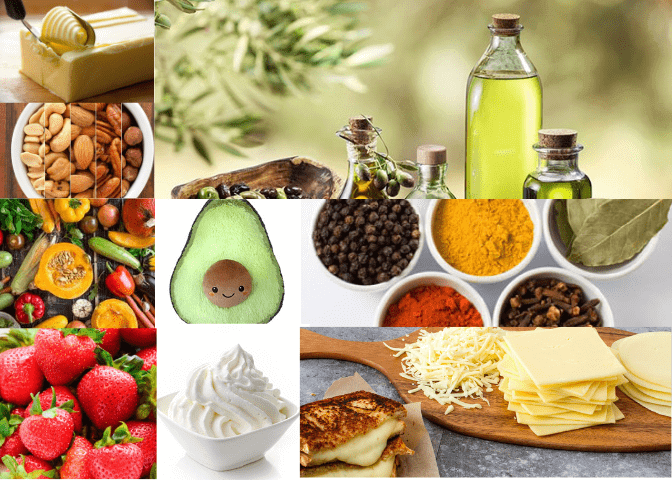
3. Take it easy with exercise
Exercise and the ketogenic diet are compatible, but it’ll take a while for your energy levels to return to normal as you enter ketosis. Dial back on your workouts until you reach ketosis to avoid making some of the symptoms of keto flu worse.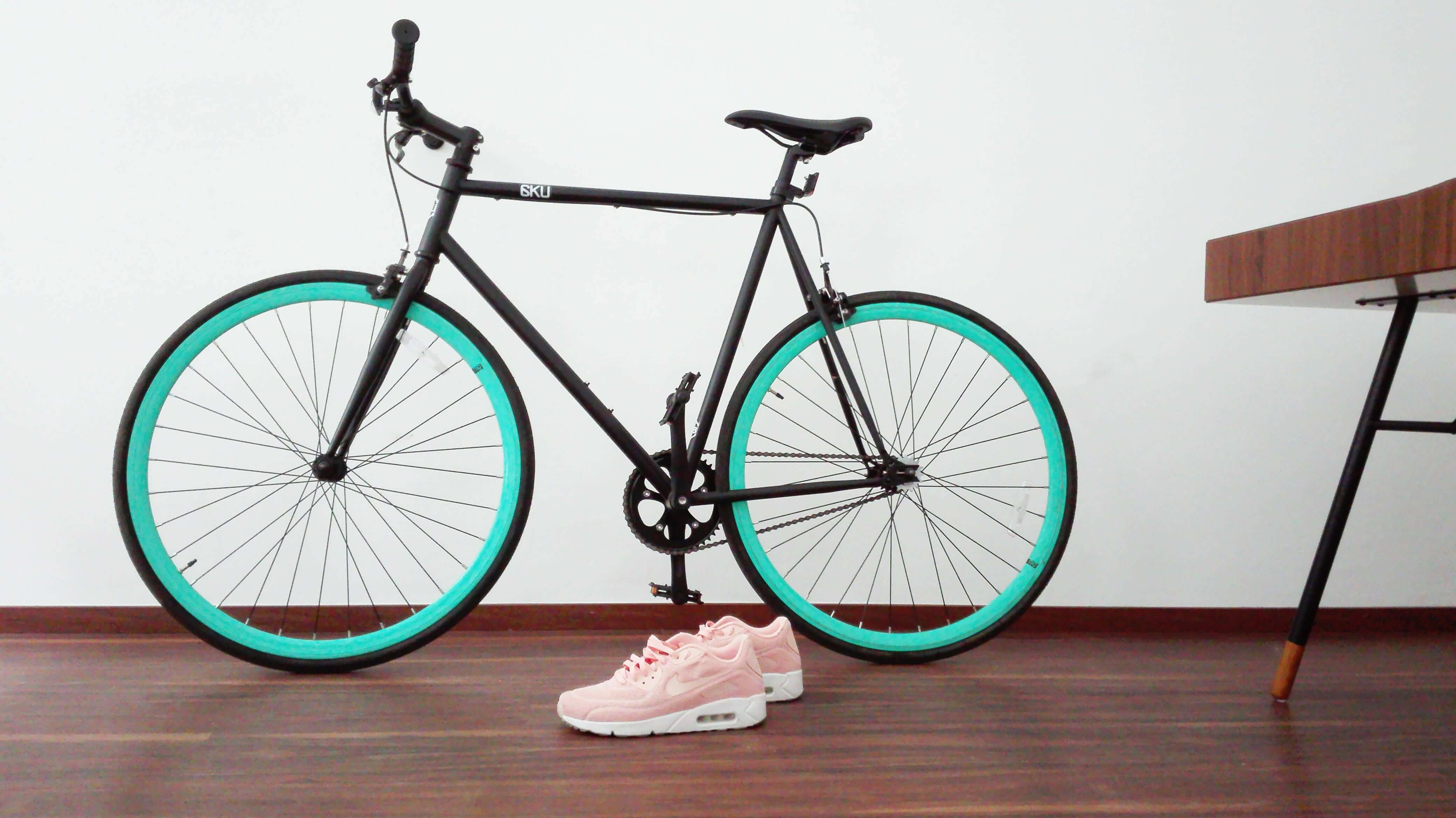
4. Don’t starve yourself
Initially, at least, the keto diet works without having to limit your calorie intake. Cutting calories in the early days of a keto diet will make some of the symptoms of keto flu worse.
Prevent this problem by eating plenty of fat and protein and avoiding hunger. Once you are in ketosis, you can experiment with eating less to speed up fat loss.
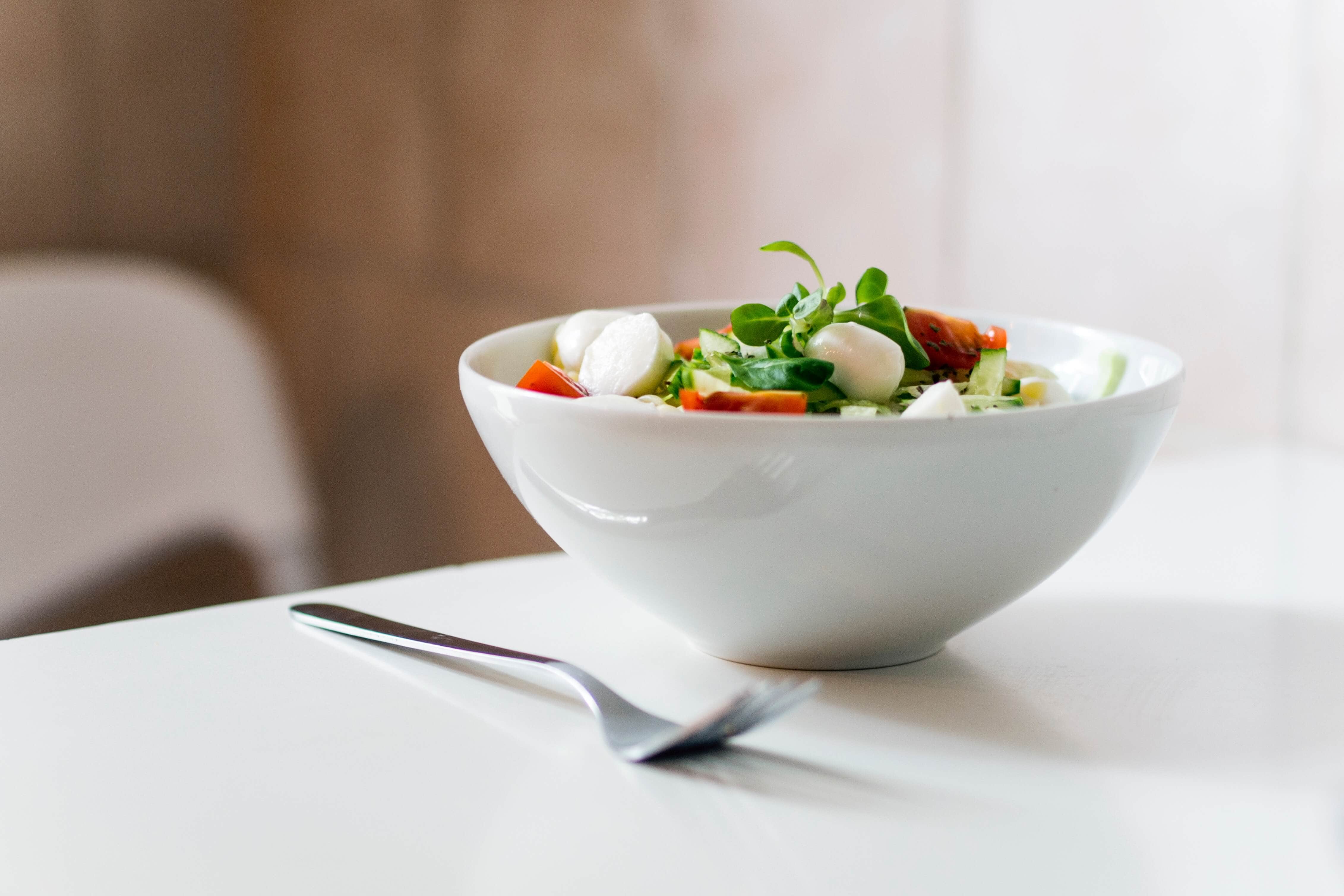
5. Use supplements that will help you get into ketosis faster
If you cut your carb intake to 20-50 grams per day, it’s only a matter of time before you reach ketosis. However, the longer it takes, the more likely you are to suffer keto flu. Get into ketosis faster by using supplements. Good options include:
- Alpha-lipoic acid (ALA)
- Conjugated linoleic acid (CLA)
- Cinnamon
- Chromium
- MCT (medium-chain triglyceride) oil
- Exogenous ketones
- L-carnitine
- L-glutamine
- Magnesium
Maintaining ketosis
Getting into ketosis is the hardest part of the keto diet. It takes time, and you have to learn to live with the keto flu and all the other mild but still unpleasant side effects.
Once you reach ketosis, all those symptoms should disappear. However, some people struggle to maintain ketosis. Follow these steps to make sure you stay true to the keto diet.
1. Watch your carb intake
Eating more than 50 grams of carbs per day will disrupt ketosis. If you’ve been doing keto for a few weeks, you may be tempted to have a treat or two. Maybe you’ve stopped monitoring your carb intake as closely. These seemingly unimportant mistakes could derail ketosis.
Continue monitoring your carb intake by using a food tracking app. This will ensure your carb intake isn't creeping up. Also, keep an eye out for hidden sugars, high-carb fruits and vegetables, and any added sugar in processed foods.
2. Maintain a high fat intake
We've said it before, but it's worth mentioning again, you need to eat lots of fat for your keto diet to work. If you aren’t eating enough fat, you will soon drop out of ketosis.If necessary, increase your fat intake by adding butter, olive oil, avocados, or other high-fat foods to your meals.
3. Don’t consume too much protein
Keto is a moderate protein diet and not a high protein diet. If you overeat protein, any that is surplus to your needs could be converted into glucose. This will put you out of ketosis.
Protein is essential but consuming it in excess could stop fat loss. Protein should make up around 20-30% of your calorie intake per day.
4. Go easy on the alcohol
Most alcoholic drinks contain carbs and/or sugar. Alcohol can also rob you of your motivation to stick to the keto diet. The occasional drink might not disrupt ketosis, but more than one probably will.
If you must have an alcoholic beverage, stick to low-carb beer, white wine, and champagne, or refined spirits like gin, vodka, and whiskey without sugary mixers. Remember to include booze in your macro tracking.
5. Try intermittent fasting
Fasting is an excellent way to get you back into ketosis or deepen your ketogenic state. Fasting for 16 to 20-hour should be all you need.
Just skip breakfast and your mid-morning snack and push your lunch back to late afternoon or early evening. Providing that you do not overeat when you break your fast, this should soon re-establish ketosis.
6. Keep using the keto sticks
Keto sticks are cheap enough that you can use them daily. Keep checking your ketone level to ensure that you still in ketosis.7. Exercise regularly.
What you need to know before starting (Keto diet drawbacks)
While the keto diet can help you lose weight and burn fat, and may offer some very noteworthy benefits, it’s not without disadvantages. Make sure you consider the following before taking the keto diet for a spin. The main keto drawbacks are:
Cravings – the keto diet involves eliminating certain foods, and that can trigger cravings. Because bread, rice, pasta, cereal, etc., are off the menu, you'll probably want them more than usual. The good news is that, once you enter ketosis, those cravings should vanish.
Labor-intensive – going keto is not easy. You’ll need to learn how to identify and then avoid certain foods, and you will get better results if you track your macros and calories too. For some dieters, all this extra work may be too much.
Restrictive – eating very few carbs can be problematic, especially when it comes to eating out. It can also be difficult if you share mealtimes with other family members.
While there are lots of keto-friendly foods available, some dieters struggle to think of what to eat.
Controversial – because of the high-fat content, keto is a very controversial diet. Fats are often thought of as unhealthy, especially by the medical community. While that might be true of saturated and trans fats, monounsaturated and polyunsaturated fats are actually very healthy.
However, that doesn't change the fact that a lot of doctors and nutritional experts do not like the keto diet, and this opinion is frequently echoed in the media.
Sustainability – like any diet, keto will only work if you stick with it. Because it is very restrictive, a lot of people find it too hard to use for long periods. Eating more than 50 grams of carbs will kick you out of ketosis, and that means you'll have to suffer keto flu all over again when you readopt the keto diet after a break.
This means that a lot of people only do keto for a few weeks, stop, and never try it again, despite experiencing good results.
Lack of endurance for intense exercise – intense workouts like sprinting and strength training are not always compatible with the keto diet. Your body prefers to use carbs for energy during this type of activity, and, with keto, carbs are off the menu.
One solution to this problem is to consume your carb allowance immediately before your workout. This will give you a burst of energy that may be enough to power you through your training program.
A better option for hardcore exercises is the cyclic ketogenic diet or CKD for short. This involves going keto for 5-6 days per week and then reintroducing carbs for 1-2 days per week. This ensures you start your training week with fully stocked glycogen stores but then revert to fat-burning ketosis toward the end of the week.
While this is a workable option, it does require planning and dedication, and you'll need to align your workouts to your diet.
For example:
Monday – low carbs, train hard
Tuesday – low carbs, train hard
Wednesday – low carbs, train hard
Thursday – low carbs, no training
Friday – low carbs, train hard to deplete glycogen stores. Eat carbs after training
Saturday – high carbs, no training
Sunday – low carbs, no/light training
Monday – low carbs, train hard, etc.Your carbed-up workouts at the start of the week will feel great. You'll have lots of strength and energy. However, as you deplete your glycogen stores and descend into ketosis, your workouts will get harder.
The last workout of the week will be especially tough. While CKD can work, it requires a disciplined approach to both training and nutrition.
Eating out on keto
One of the most challenging aspects of the keto diet is eating out. The keto diet is unusual enough that very few restaurants will offer keto-friendly meals.
Does that mean you can’t eat out on keto? Absolutely not. You will, however, need to order carefully and exercise some self-control.
To eat out and stay in ketosis, follow these rules:
1. Turn down bread and breadsticks – don’t even have them on your table in case you are unable to resist temptation. Send them away before your willpower fails.
2. Stick to protein and vegetable dishes – you can’t go wrong on keto is you mostly eat meat or fish and vegetables. Add some healthy fats such as olive oil, and you have the perfect keto meal.
3. Avoid most sauces – sauces are often thickened with flour and flour contains carbs. If in doubt, ask your server about the ingredients in your food. Replace sauce with mayonnaise, which is made from keto-friendly eggs and olive oil.
3. Avoid most sauces – sauces are often thickened with flour and flour contains carbs. If in doubt, ask your server about the ingredients in your food. Replace sauce with mayonnaise, which is made from keto-friendly eggs and olive oil.
4. For dessert, have the cheeseboard – most desserts contain sugar and carbs. If you are still hungry after your meal, order the cheeseboard but without bread or crackers. Cheese is high in fat and protein, making it ideal for the keto diet.
5. If you must drink alcohol, have light beer or spirits – cocktails, dark beers, wine, and spirits with mixers are usually high in carbs and sugar. Avoid these beverages and stick to spirits without mixers or made with diet sodas. Light beers are also very low in carbs.
Be warned, the alcohol can reduce your willpower, and more than 1-2 drinks may kick you out of ketosis. By all means, have one drink but stick to diet soda or water the rest of the time.
6. Choose your restaurant wisely – when it comes to keto, some restaurants are better than others. For example, American Chinese food is often deep-fried and coated in breadcrumbs and comes with rice or noodles.
In contrast, traditional Chinese food uses more vegetables and tends to be lower in carbs. Mexican food can be tricky because beans, corn chips, tortillas, and many other Mexican staples are high in carbs.
If possible, view the menu online before you go to your chosen restaurant to make sure you will be able to find appropriate food to order.
Get some idea about How to do Vegetarian Ketogenic Diet.
Sample Keto Diet Eating Plan
As you now know, the keto diet is based on eating very few carbs, moderate amounts of protein, and a lot of dietary fat. But what does that look like in real life? And can you still eat tasty food while following the keto diet?
Here is a sample plan so that you can see exactly what you can expect to eat on the keto diet. Note: this eating plan is for the standard keto diet, and not one of its variations, e.g., the cyclic ketogenic diet.
Day 1:
Breakfast – two eggs fried in butter served with sautéed spinach
Lunch – a grass-fed burger (without bun) served with a salad, avocado, and olive oil dressing
Dinner – grilled white fish fillet served with green beans and faux rice made with grated cauliflower
Day 2:
Breakfast – mushroom and spinach omelet
Lunch – large tuna salad with mayonnaise dressing
Dinner – roast chicken, broccoli, carrots, and gravyDay 3:
Breakfast – roasted bell peppers stuffed with ground beef and cheese
Lunch – egg and avocado salad with arugula and blue cheese dressing
Dinner – steak and oven-baked Mediterranean veggiesDay 4:
Breakfast – chia seed pudding made with coconut milk and chopped walnuts
Lunch – chicken Caesar salad without croutons
Dinner – grilled salmon with roasted cauliflower and broccoli florets
Day 5:
Breakfast – coddled eggs and grilled bacon with sautéed mushrooms
Lunch – cheese and ham wraps made with lettuce leaves instead of tortilla
Dinner – coconut chicken curry served with grated cauliflower
Day 6:
Breakfast – full-fat Greek yogurt and chopped nuts
Lunch – steak salad bowl with cheese and salsa
Dinner – grilled pork chops with a medley of grilled vegetables
Day 7:
Breakfast – vegetable frittata
Lunch – cold cuts, mixed raw veggies, and olive oil dip
Dinner – meatballs with zucchini noodles and parmesan cheese
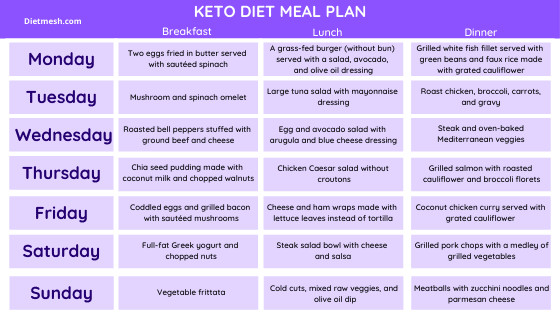
What about snacks?
Once you have entered ketosis, you should find that you are no longer hungry and that your energy levels are stable. After all, you have more than enough body fat to use for ketone production.
That being said, you may still want to eat snacks between meals. Good keto snack options include:
So, is the keto diet right for you?
The keto diet can help you lose fat quickly, but it is not always easy to live with. Unlike diets that rely on calorie restriction alone, even a small cheat or slip-up will prevent the keto diet from working its magic.
It can also affect your exercise performance, especially if you enjoy high-intensity workouts.
But, if you have strong willpower, don’t mind giving up carbs, and are happy to follow a very prescriptive diet, keto can work for you.
If you need more flexibility and variety in your diet, keto is not for you, and you should look for a less regimented weight loss plan to follow.
Start your journey by reviewing our Step by Step guide now.
From the Dietmesh team, best of luck.


